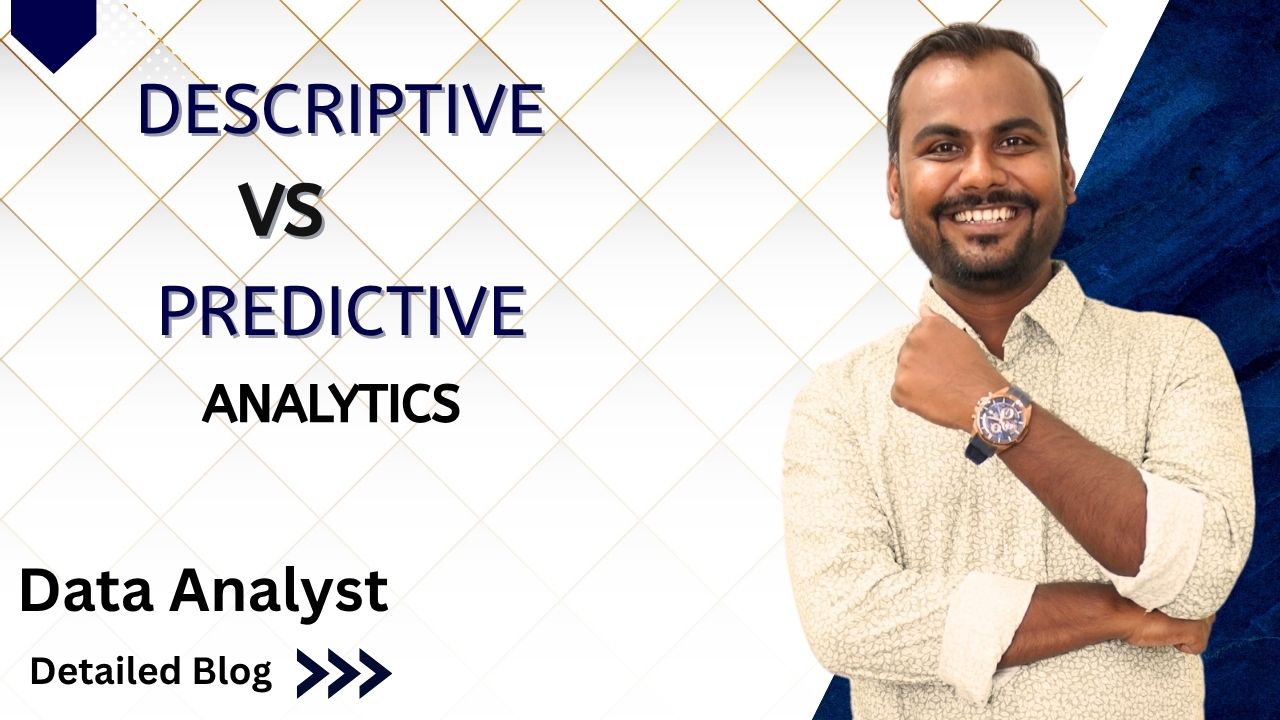Descriptive vs Predictive Analytics
Introduction
Exploring Descriptive vs Predictive Analytics – What’s the Difference?
Data is the fuel that powers modern businesses—and analytics determines how that data is used. If you’re planning to become a data analyst or following the Google Data Analytics learning path, understanding the difference between descriptive and predictive analytics is essential. These two analytical approaches help organizations interpret past data and forecast future outcomes.
Let’s break it down in a simple, practical way.
What Is Descriptive Analytics?
Descriptive analytics focuses on summarizing past data to understand what has already happened. It’s the foundation of data analysis and the first step of the analytics process.
Key Characteristics
-
Answers: “What happened?”
-
Uses historical data
-
Identifies trends and patterns
-
Helps summarize business performance
Common Examples
-
Monthly sales and revenue reports
-
Website traffic summaries
-
Customer churn percentages
-
Average order value
Tools Commonly Used
-
Excel
-
Google Data Studio
-
SQL
-
Tableau / Power BI
For anyone wanting to become a data analyst, descriptive analytics is usually the first skill taught in programs like the Google Data Analytics course.
What Is Predictive Analytics?
Predictive analytics goes a step further—using historical data, machine learning, and statistical algorithms to forecast future outcomes.
Key Characteristics
-
Answers: “What is likely to happen?”
-
Uses statistical modeling and machine learning
-
Helps with decision-making and planning
Common Examples
-
Predicting future sales
-
Forecasting customer churn
-
Fraud detection
-
Demand forecasting in supply chain
Tools Commonly Used
-
Python (scikit-learn, pandas)
-
R
-
Machine learning platforms
-
SQL + analytics engines
Predictive analytics skills are very useful if you want to level up and become a data analyst with advanced capabilities.
Descriptive vs Predictive Analytics – The Core Differences
| Feature | Descriptive Analytics | Predictive Analytics |
|---|---|---|
| Focus | What happened? | What will happen? |
| Data Used | Historical data | Historical + patterns + models |
| Techniques | Aggregation, summarization | ML models, forecasting, regression |
| Output | Reports, dashboards | Predictions, probabilities |
| Skill Level | Beginner-friendly | Intermediate to advanced |
| Used For | Performance tracking | Future planning |
Why Understanding This Difference Matters
If you’re planning to become a data analyst, you’ll start with descriptive analytics and gradually learn predictive analytics to handle more advanced responsibilities. In fact, programs like Google Data Analytics introduce you to descriptive concepts first before moving into predictive insights.
Businesses rely on both:
-
Descriptive analytics → Helps them understand the past
-
Predictive analytics → Helps them prepare for the future
Together, they drive smarter decision-making.
Conlcusion
Understanding descriptive vs predictive analytics is crucial for anyone entering the world of data. Whether you’re trying to become a data analyst or exploring the Google Data Analytics curriculum, these two analytical approaches form the backbone of modern data-driven decision-making.
At Learnomate Technologies, we make sure you not only understand such cutting-edge features but also know how to implement them in real-world projects. Whether you’re a beginner looking to break into the database world or an experienced professional upgrading your skillset—we’ve got your back with the most practical, hands-on training in Oracle technologies.








Let’s keep learning, exploring, and growing together. Because staying curious is the first step to staying ahead.
Happy learning!
ANKUSH






